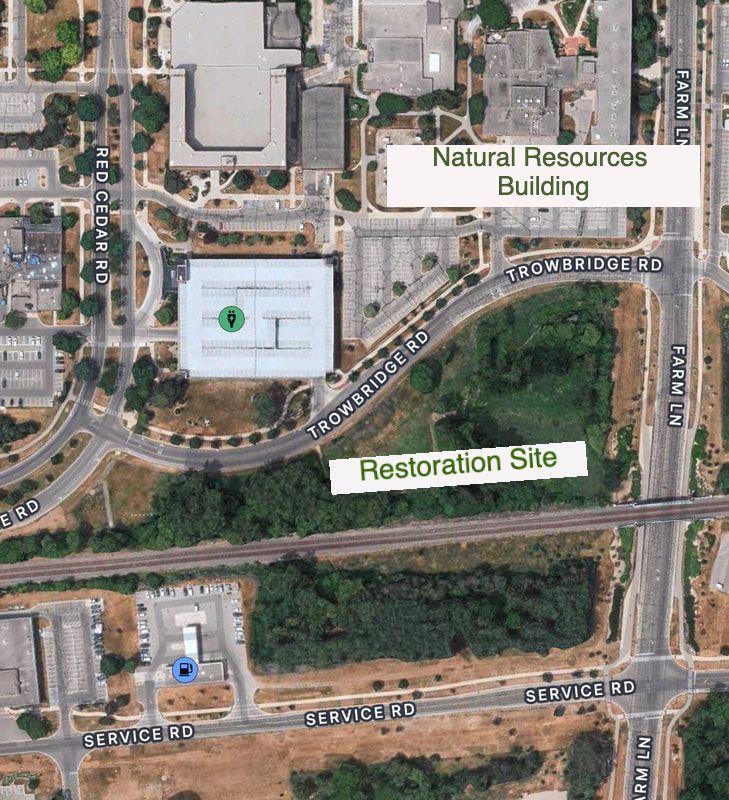Restoration Site Management
The Restoration site is an area on Michigan State University's campus that the Fisheries and Wildlife Club was given by the university to manage. The Fisheries and Wildlife clubs Habitat Chair is in charge of everything in the site, and keeps extensive records for the site. The Habitat Chair also has the Restoration Committee which once joined allows any student who is curious about restoration to help the club with the site and learn about habitat management.
The Fisheries and Wildlife club has occasional meetings at the site to help with management of the native species, bird boxes, and anything else to help restore this beautiful habitat.
The Fisheries and Wildlife club has occasional meetings at the site to help with management of the native species, bird boxes, and anything else to help restore this beautiful habitat.
History
History
- The Natural Resources students used the Restoration Area historically for classes and for club meetings.
- MSU granted the Fisheries and Wildlife Club management rights of the area in 1975.
- In the early 2000s, construction of Trowbridge Road and the overpass on Farm Lane disrupted much of the area.
- In 2007, members of the eBoard proposed a management plan to restore the space and native ecosystems.
- In 2020, a major buckthorn removal occurred, and yearly mowing began. These activities are organized between the club habitat chairs and IPF.
- Every year there is seeding, mowing, surveying, etc.
- The Xerces Society has declared the site an official pollinator habitat.
Recent Work
Recent Work
- Four Nesting Boxes were installed for birds in the Spring of 2023.
- In the fall of 2023, the Restoration Site Committee was made and began weekly plantings, seed collections, invasive plant removals, and wildlife/plant life monitoring.
- In the fall of 2023, the Restoration Committee partnered with the Meridian Conservation Corps and they were able to collect native seeds from remnant prairie preserves around Michigan State University.
- In the fall of 2021 and each year following, the entire Fisheries and Wildlife club has a Bioblitz in the area to have a large amount of data collection occurring at once.
- In Spring of 2024, the fisheries and wildlife club had a club meeting to repair bird boxes, plant native species, and pull out any invasive species found.
Native species commonly found and planted
Native Species Commonly Found and Planted
- Black eyed Susan’s
- Tall goldenrod
- Showy goldenrod
- Grey headed coneflower
- Poison sumac
- Bee balm
- Cattails
- Asters
- Switch grass
- Indian grass
- Big bluestem
- Little bluestem

